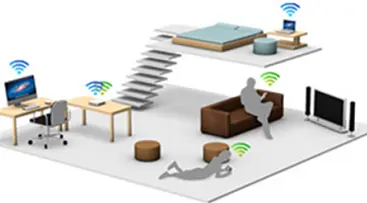I want an open source mouse with electromagnetic resistance wheel like one in Logitech MX Master 3S.
Coelacanthus
- 0 Posts
- 97 Comments
Livepatch is implemented in a hacking way. It dynamically patch kernel code in memory so it should only be used in the machine can’t be reboot completely. For a normal machine, use unattended-upgrades instead.
GeoIP is the last way. Before that, geoclue will try to locate using found Wi-Fi and Cell towers via beacondb.net (via Mozilla Location Service before it shut down). If beacondb.net return fail or (0, 0), it try GeoIP at last.

 2·3 months ago
2·3 months agoIn most cases, yank in Vim just need somewhere to store contents temporarily, not share it with others.

 2·3 months ago
2·3 months agoYes. The original Ethernet use Coaxial Cable with bus topology when it was standardized at 1982. This way was used by its competitors like Token Ring as well. 10BASE5 use thicker coaxial cable so it called thick Ethernet and 10BASE2 called thin Ethernet. (5 and 2 means it can reach 500 meters and 200 meters)
And then the engineer of AT&T want to reduce cost so they found the phone line. At that time, the phone line use twisted pair line and usually have many unused pairs in the line to a office room. So they think those pair can be reused so there is almost no cost for line. Since the phone line already use star topology so they choose it as well. 1BASE5 was standardized at 1986 (so the twisted pair ethernet have lower bandwidth than coaxial ethernet at beginning) and also called StarLAN (was renamed to StarLAN 1 when StarLAN 10 was invented at 1988). And then at 1990, 10BASE-T which is based on StarLAN 10 was invented. The last is the story we all know today.

 1·3 months ago
1·3 months agoKensington Orbit® series are matching your budget. To be honest, Kensington Slimblade Pro is almost 2 times of you budget but it worths.

 4·3 months ago
4·3 months agoWhen I see the title, I initially thought you are talking about 10BASE5 and 10BASE2 (old Coaxial Ethernet)… I just know about DOCSIS technology, but I have never used it. In my hometown, most people switched directly from ADSL to FTTH.

 3·3 months ago
3·3 months agoHe may want to say “fastsync” (whose kernel part called winesync). It’s the predecessor of NTsync and was renamed to NTsync when merged into linux mainline.
Before NTsync was merged, those distrobutions provides the kernel packages with winesync patches. Since linux 6.12, NTsync was merged so they droped winesync from kernel package. But NTsync’s API is different with fastsync/winesync, so old wine with fastsync support will stop working with new kernel. (While NTsync still isn’t merged to wine)

 2·3 months ago
2·3 months agoAnd snapshot can benefit backup. Since some software need to be shudown to do backup, minimize the down time is important. The snapshot can make down time is almost stop and restart time, and the software can be online again and we can do backup on snapshot in background.
https://esp32-open-mac.be is working on reverse engineering ESP32 Wi-Fi hardware to implement a open source ESP32 MAC and PHY driver.

 2·3 months ago
2·3 months agoAFAIK, Mopria doesn’t develop universal printing standards actually. The IPP standard was developed by Printer Working Group of IEEE. Of course, its members are almost same as Mopria. The standard Mopria developed is eSCL, a scanning standard. eSCL has a competitor, WSD, which was developed by Microsoft.

 1·3 months ago
1·3 months agoIn fact, most manufacturers save money and don’t shield the cable, forcing half-speed USB 1.1, which is enough for all mice and keyboards - less than 50 kb/s of the available 6 Mb/s is required even for 240Hz polling. High-end mice might have USB 3.0 (9 pins instead of 4 in the plug) but there should be no practical difference between 3.0 and 2.0 speeds.
When speed is enough, latency became an issue. Although with 8kHz poll rate (USB 2.0 half-speed and full-speed can only get 1kHz poll rate), the latency will be 125µs at least. But for USB 3.0, it gained two ways to improve latency: 1) it can send Bus Interval Adjustment Message to adjust latency to 13.333µs (around 75kHz); 2) it can switch to async mode. Host no longer poll the device, instead, the device notify host via ERDY.
Of course, I don’t know how many devices utilized these features.
The FM band is generally not a license-free band. Transmission on this band requires application to and approval from the local radio management department.

 1·3 months ago
1·3 months agoIt may be caused by you didn’t connect GND. So debugger and board has different ground level and it looks like RX/TX were pull up because 0V on one side is equal to a higher voltage on another side.
For forecast, you can selfhost a Open-Meteo. But note this need a lot of RAM and storage to run the weather model.

 1·3 months ago
1·3 months agoHM-SMR works better than normal DM-SMR, but it’s rare and limit the filesystem choice: none on Windows and f2fs or btrfs on Linux.
Does anyone know USB fingerprint sensors that work and are available? I would also be interested if these are actually secure or some cheap stuff that is very insecure.
FYI, the devices list which were verified support or unsupport by libfprint.
https://fprint.freedesktop.org/supported-devices.html
https://gitlab.freedesktop.org/libfprint/wiki/-/wikis/Unsupported-Devices

 2·3 months ago
2·3 months agoSuggest use
fsfreeze --freezeto block all access operation to create a stable image without unmount the SD card. (And release it later usingfsfreeze --unfreeze.)BTW, this feature was created by XFS and was moved to VFS in Linux 2.6.29 so all filesystems supported by Linux gained this feature.

 3·3 months ago
3·3 months agoFYI, nvidia driver will remove shader cache that bigger than 1024MB. That make the game run without shader cache and has poor performance. Set environment variable
__GL_SHADER_DISK_CACHE_SKIP_CLEANUP=1to prevent this behavior.https://github.com/HansKristian-Work/vkd3d-proton/issues/2506
Tips: Don’t forget to search in issues of dxvk and vkd3d-proton when you meet game performance issue.






Docker will set the default behavior of FORWARD chain to DROP, and then this make the home network of my friend off from the internet completely…
https://docs.docker.com/engine/network/packet-filtering-firewalls/#docker-on-a-router